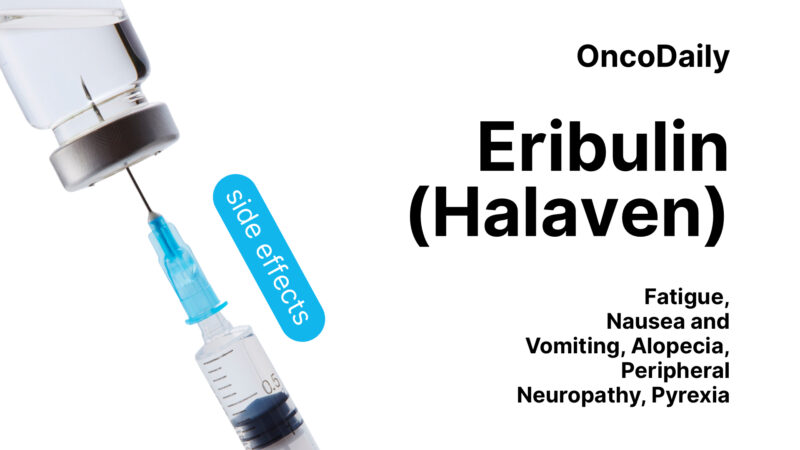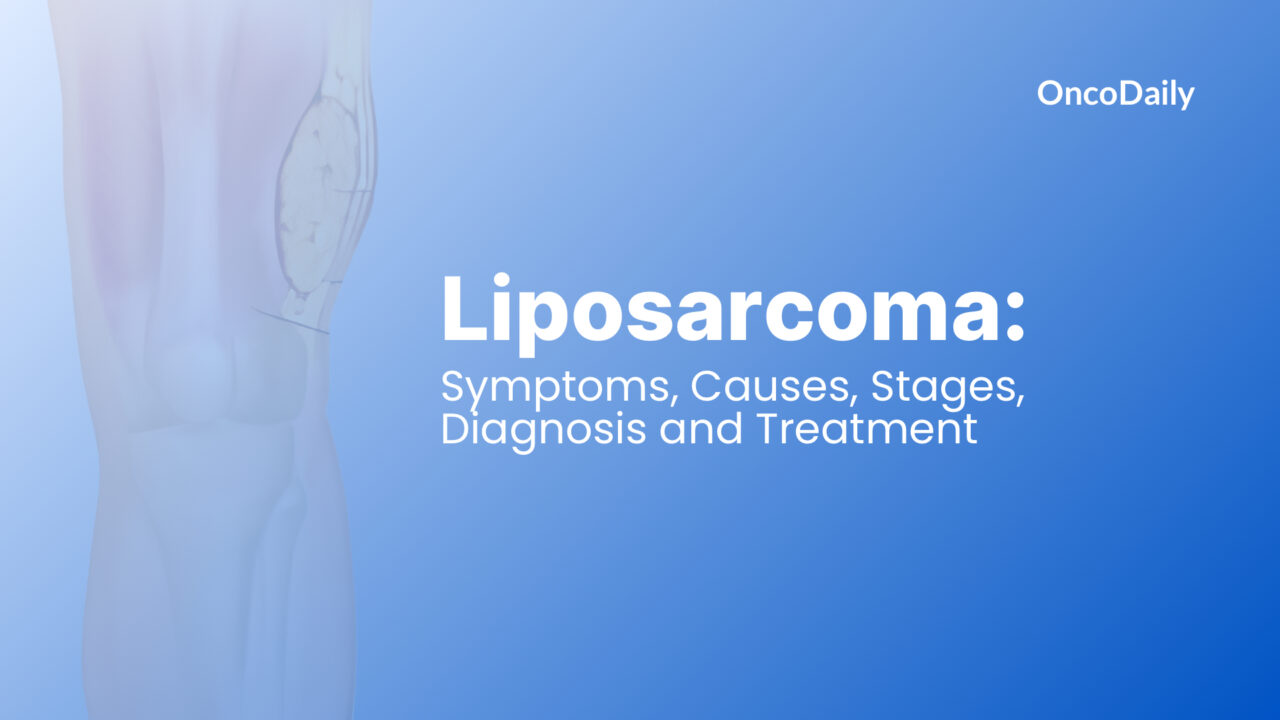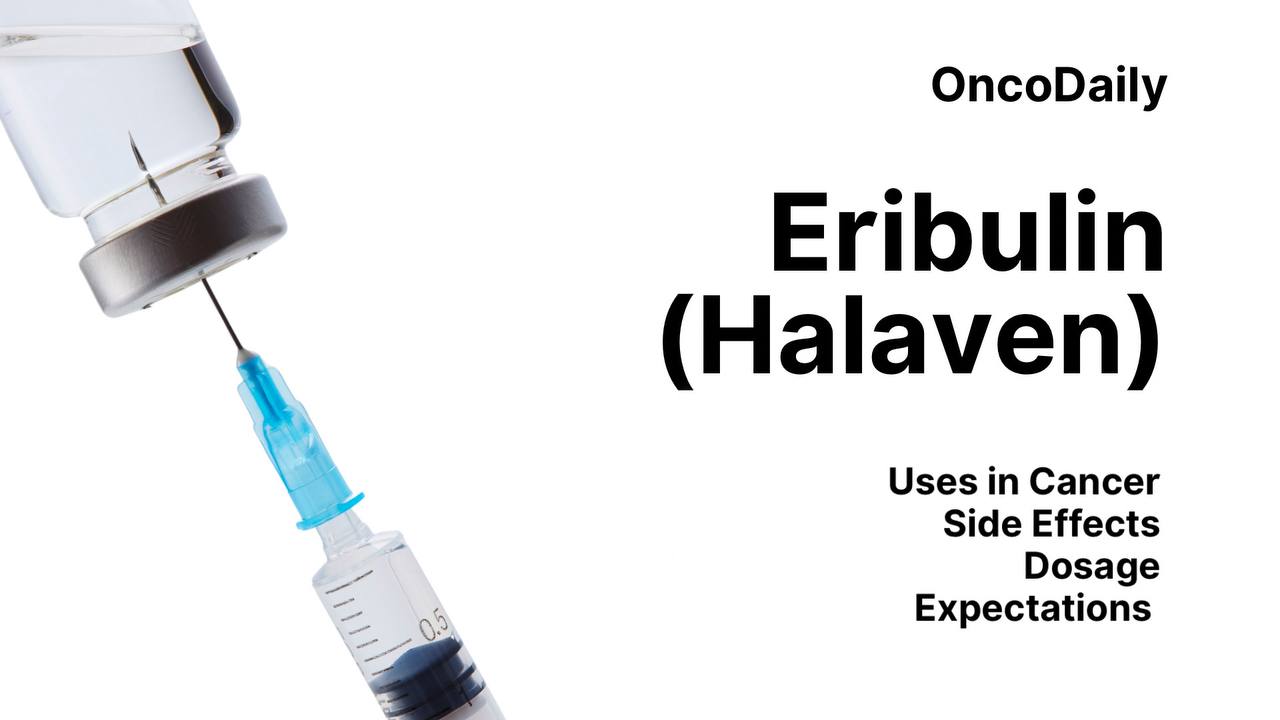Eribulin is an anticancer chemotherapy agent classified as a microtubule dynamics inhibitor and structurally related to halichondrin B. It belongs to the group of non-taxane microtubule inhibitors. It disrupts the structure needed for cancer cells to divide and grow, leading to cell death.
This article provides a detailed overview of Eribulin, covering its approved uses in cancer treatment, common side effects, recommended dosage, and key expectations during therapy. It also explains how Eribulin works, its role in oncology, and important considerations for patients receiving this medication.
Which company produced Eribulin?
Eribulin (Halaven) is produced by the Japanese pharmaceutical company Eisai Co., Ltd. Eisai Co., Ltd. is a global pharmaceutical company headquartered in Tokyo, Japan. Founded in 1941, Eisai focuses primarily on oncology, neurology, and rare diseases. The company’s mission centers around the concept of “human health care” (hhc), emphasizing patient needs and well-being. Eisai is known for developing innovative therapies such as Eribulin (Halaven) for cancer and Lenvatinib (Lenvima) for various solid tumors. With research and development centers and offices worldwide, Eisai continues to play a significant role in advancing cancer treatment and improving patient outcomes.
How does Eribulin work?
Halaven is a microtubule dynamics inhibitor. It works by binding to microtubules — structures inside cells that are essential for cell division. Unlike older chemotherapy agents that both stabilize and destabilize microtubules, Eribulin specifically inhibits microtubule growth without affecting their shortening. This disruption prevents cancer cells from properly dividing, leading to irreversible cell cycle arrest and eventually cancer cell death.
Additionally, Eribulin has been shown to reverse processes like epithelial-mesenchymal transition (EMT) and improve tumor blood supply, which may help enhance its anti-tumor effects.
Eribulin FDA approvals
Halaven received its first FDA approval in November 2010 for the treatment of metastatic breast cancer in patients who had previously undergone at least two chemotherapy regimens for advanced disease, often including an anthracycline and a taxane. This approval marked a significant advancement in the treatment of breast cancer, particularly for patients with limited treatment options.
In January 2016, the FDA expanded the approval of Eribulin to include unresectable or metastatic liposarcoma. This was a groundbreaking moment, as Eribulin became the first drug to receive approval for liposarcoma based on evidence showing an overall survival benefit. With these approvals, Eribulin cemented its role as a key therapeutic option for patients with certain difficult-to-treat cancers.

Read about Breast Cancer: Symptoms Causes, Stages, Diagnosis and Treatment on OncoDaily.
What research is behind the approval?
Halaven has received FDA approval for the treatment of metastatic breast cancer and unresectable or metastatic liposarcoma. These approvals are based on Phase III clinical trials showing significant improvements in overall survival compared to standard treatments. The following summarizes the research supporting these approvals.
Eribulin For Breast cancer
On November 15, the FDA approved Halaven™ for patients with metastatic breast cancer who have previously received at least two chemotherapy regimens, including an anthracycline and a taxane.
In the EMBRACE phase 3 trial, published in Lancet Oncology in 2011, eribulin mesilate was compared to physician’s choice treatment in heavily pretreated metastatic breast cancer patients. Eribulin, a non-taxane microtubule inhibitor, was tested for its ability to improve overall survival in this challenging patient population.
A total of 762 women were randomly assigned to receive either eribulin (1.4 mg/m² IV on days 1 and 8 of a 21-day cycle) or the treatment of their physician’s choice. Patients had previously undergone 2-5 chemotherapy regimens, including anthracyclines and taxanes. The results showed a significant survival benefit for eribulin, with a median overall survival of 13.1 months versus 10.6 months for the physician’s choice group. The most common side effects were fatigue and neutropenia, with peripheral neuropathy leading to discontinuation in some eribulin patients.
This study demonstrated that eribulin offers a clinically meaningful survival advantage for patients with heavily pretreated metastatic breast cancer, challenging the assumption that survival benefits are unachievable in such refractory cases.
60070-6/asset/418ca49a-9764-4a7f-9d6f-2be3baa0f558/main.assets/gr2.jpg)
Eribulin for Liposarcoma
On January 28, 2016, the FDA approved Eribulin (HALAVEN) for treating patients with unresectable or metastatic liposarcoma who had previously received an anthracycline-containing regimen. The approval was based on a phase III trial with 446 patients who had received at least two prior chemotherapies. Patients were randomized to receive either Eribulin (1.4 mg/m²) or dacarbazine (850–1200 mg/m²) every 21 days.
The trial showed a significant improvement in overall survival (OS) for patients treated with Halaven, with a median OS of 13.5 months compared to 11.3 months for dacarbazine (HR 0.75, p=0.011). The benefit was most notable in patients with liposarcoma, where median OS was 15.6 months with eribulin vs. 8.4 months with dacarbazine (HR 0.51), and median progression-free survival (PFS) was 2.9 vs. 1.7 months (HR 0.52). Eribulin showed no significant benefit in patients with leiomyosarcoma.
The histology-specific subgroup analysis of patients with LPS showed that Halaven extended OS to 15.6 months compared to 8.4 months for dacarbazine (hazard ratio, 0.51; P < .001).
Common side effects included fatigue, nausea, alopecia, and neutropenia. Serious reactions were neutropenia and pyrexia, with a small number of patients experiencing fatal neutropenic sepsis. The recommended dose is 1.4 mg/m² on days 1 and 8 of a 21-day cycle.
Further studies are needed to evaluate Eribulin in earlier treatment lines and in combination with other therapies.

Eribulin side effects and its management
Eribulin mesylate (Halaven™) is an anticancer drug used to treat metastatic breast cancer and unresectable or metastatic liposarcoma. While effective in prolonging survival, eribulin is associated with a range of side effects, varying from mild and manageable to severe. Monitoring and early management of these side effects are essential to minimize treatment interruptions and complications.
Common side effects
Patients receiving Halaven often experience certain predictable side effects. Fatigue is the most common, affecting more than half of patients, and can be managed with rest, good nutrition, and light physical activity. Nausea, sometimes with vomiting, is frequently reported and is typically controlled with anti-nausea medications such as ondansetron. Constipation is also common and can usually be relieved through adequate hydration, dietary fiber, and stool softeners or laxatives. Hair loss (alopecia) is another expected side effect, though it is reversible once treatment ends. Peripheral neuropathy—tingling, numbness, or burning sensations in the hands and feet—may occur, requiring close monitoring and possible dose adjustments. Some patients also develop low-grade fever during treatment.
Less Common Side Effects
Though less frequent, other side effects can affect quality of life. These include diarrhea, which is typically managed with medications like loperamide, and appetite loss that may lead to weight loss. Support from a dietitian can be helpful. Headache, dizziness, and muscle or joint pain may occur but are generally mild. Mild anemia is also possible and may cause fatigue or shortness of breath. In rare cases, blood transfusions may be necessary.
Serious Side Effects
Some side effects of Halaven are serious and require immediate attention. Neutropenia, a significant drop in white blood cells, increases infection risk. Patients are closely monitored with blood tests, and medications like G-CSFs may be used to boost white blood cell counts. Febrile neutropenia (fever with low neutrophils) and sepsis are life-threatening conditions that demand urgent hospitalization and intravenous antibiotics. Thrombocytopenia, or low platelet count, can increase bleeding risk and may require platelet transfusions. Eribulin may also prolong the QT interval, potentially causing serious heart rhythm disturbances; ECG monitoring and electrolyte correction are advised for those at risk. Severe peripheral neuropathy may become irreversible, and dose reduction or discontinuation is recommended if symptoms worsen. In rare cases, electrolyte abnormalities such as low potassium or calcium levels and pulmonary issues like interstitial lung disease may develop. Any new respiratory symptoms should be evaluated immediately.

Eribulin during Pregnancy
Halaven can cause fetal harm, as animal studies have shown embryo-fetal toxicity. There are no available data on its use during pregnancy. Women who are pregnant or planning to become pregnant should avoid using eribulin. Women of reproductive potential should use effective contraception during treatment and for at least 2 weeks after the final dose. Men should use effective contraception for 3.5 months after treatment.
Animal studies suggest eribulin may impair male fertility, though the duration of this effect is unknown.
It is unclear whether Halaven is excreted in breast milk. Due to potential risks to infants, mothers should decide whether to discontinue breastfeeding or the medication, considering the drug’s importance to their health.
What is the Recommended Dosage of Eribulin?
Halaven is provided as an intravenous solution with a concentration of 0.5 mg/mL (1 mg/2 mL). For patients with metastatic breast cancer who have previously undergone at least two chemotherapy regimens, including both an anthracycline and a taxane, the recommended dose is 1.4 mg/m² administered intravenously over 2 to 5 minutes on Days 1 and 8 of a 21-day cycle. The same dosing applies for patients with unresectable or metastatic liposarcoma who have been treated with an anthracycline-based regimen.
Dosage Modifications
Before each dose, patients should have a blood count and check for neuropathy. Treatment is delayed if neutrophils or platelets are low, or if severe side effects occur. If the ANC is below 1,000/mm³, platelets drop below 75,000/mm³, or severe toxicities occur, treatment should be delayed. If toxicity resolves by Day 15, treatment can resume at a reduced dose.
For prolonged neutropenia, febrile neutropenia, severe thrombocytopenia, or serious side effects, reduce the dose to 1.1 mg/m². If further toxicity occurs, reduce to 0.7 mg/m². If side effects persist, discontinue treatment. In cases of moderate-to-severe renal impairment (CrCl 15-49 mL/min), start with 1.1 mg/m². For hepatic impairment, use 1.1 mg/m² for mild dysfunction (Child-Pugh A) and 0.7 mg/m² for moderate dysfunction (Child-Pugh B).
If toxicity resolves, treatment can resume at a lower dose.

Read more about Liposarcoma: Symptoms, Causes, Stages, Diagnosis and Treatment on OncoDaily.
How is Eribulin administered?
Eribulin is administered via IV infusion, either undiluted or diluted in 100 mL of 0.9% NaCl. The infusion should be given over 2-5 minutes. It is important not to mix eribulin with dextrose solutions or administer it concurrently with other medical products through the same IV line. Each vial contains 1 mg of eribulin in a 0.5 mg/mL solution, composed of ethanol and water. Any unused portion should be discarded.
Halaven is administered in a 21-day treatment cycle, and you may only need to take the medication during the first 1 to 2 weeks of each cycle. The duration of your treatment will be determined by your doctor.
For storage, undiluted or diluted eribulin can be kept at room temperature for up to 4 hours or refrigerated for up to 24 hours.
What to Avoid During Eribulin Treatment?
During Halaven treatment, patients should take precautions to avoid certain risks. Since eribulin can weaken the immune system, it is important to avoid contact with individuals who have infections. Practicing good hygiene, such as frequent handwashing, can help reduce the risk of infection.
Live vaccines should also be avoided, as the immune response may be impaired during treatment. It is crucial to consult a doctor before receiving any vaccines.
Certain medications may interact with eribulin, so patients must inform their healthcare provider of any new drugs being taken. Grapefruit and grapefruit juice should be avoided, as they can interfere with the way eribulin is processed in the body.
To ensure effective treatment, missed doses should be avoided, and patients should follow the prescribed schedule. Staying hydrated is also important, as side effects like nausea and vomiting may increase the risk of dehydration.
Finally, since eribulin can increase sensitivity to sunlight, patients should avoid prolonged sun exposure and use sunscreen when outdoors.
Eribulin’s effectiveness over time
Halaven has demonstrated consistent effectiveness in treating various cancers, especially metastatic breast cancer, over time. Studies have shown that it offers significant overall survival benefits compared to other treatments.
In a 2019 JCO study, the combination of gemcitabine and Halaven was evaluated for cisplatin-ineligible patients with metastatic urothelial carcinoma. Patients who were not suitable for cisplatin-based therapies, due to factors like renal impairment or neuropathy, received gemcitabine (1,000 mg/m²) on days 1 and 8, followed by eribulin (1.4 mg/m²) on the same days in 21-day cycles. Of the 24 patients treated, the objective response rate was 50% (12 responders), and the median overall survival was 11.9 months. Additionally, the median progression-free survival was 5.3 months. The most common treatment-related toxicities included fatigue (83%), neutropenia (79%), and anemia (63%). This combination therapy shows promising results for cisplatin-ineligible patients, with outcomes comparable to other regimens, though further investigation is needed.

Published in JCO in 2024, a study explored the impact of epithelial-mesenchymal transition (EMT) on the prognosis of metastatic breast cancer patients treated with Halaven or CDK4/6 inhibitors. Among 127 patients, ZEB1 overexpression was linked to shorter recurrence-free survival, while higher levels of SNAIL1, TWIST1, and PTEN predicted better survival with eribulin. VIM expression was associated with poorer survival after CDK4/6i treatment. These findings suggest EMT biomarkers could guide treatment decisions, with eribulin being more effective in certain EMT-related gene profiles.
New updates in 2025
The phase III EMERALD trial, published in the Journal of Clinical Oncology in 2025, compared eribulin to taxane (docetaxel or paclitaxel) combined with trastuzumab-pertuzumab for first-line treatment of HER2+ metastatic breast cancer (BC). The study, which enrolled 446 patients, found that eribulin was noninferior to taxane in terms of progression-free survival (PFS), with median PFS of 14.0 months for eribulin and 12.9 months for taxane.
While overall survival (OS) has not been reached for eribulin, it was 65.3 months for taxane. Quality of life was better maintained with eribulin, and adverse events were similar, though neutropenia was more common with eribulin and skin reactions, diarrhea, and edema were more common with taxane. These results suggest that eribulin with HP is a promising first-line treatment option for HER2+ metastatic breast cancer.

Ongoing trials with Eribulin
The NCT06889688 study is a Phase III trial comparing the combination of camrelizumab, apatinib, and eribulin to physician’s choice chemotherapy for advanced triple-negative breast cancer (TNBC). The primary goal is to assess improvements in progression-free survival (PFS) and overall survival (OS).
Secondary objectives include comparing response rates, disease control, survival duration, quality of life, and biomarker analysis. Safety will be evaluated by comparing the incidence and severity of adverse events between the two groups. The study aims to determine if this combination therapy provides better outcomes than standard chemotherapy in TNBC.
NCT06678230 is a Phase II trial testing eribulin combined with erlotinib in HER-2 negative, locally advanced or metastatic breast cancer. It will enroll 40 patients who’ve previously received chemotherapy. Participants will receive eribulin (1.4 mg/m² on days 1 and 8) and erlotinib (12 mg daily for 14 days with a 7-day break) every 3 weeks. The trial aims to evaluate progression-free survival (PFS) and safety, with assessments every 6 weeks. Treatment continues until disease progression, intolerable toxicity, or withdrawal.
Written by Mariam Khachatryan, MD
FAQ
What types of cancer can Eribulin treat?
Halaven is primarily used to treat metastatic breast cancer and unresectable or metastatic liposarcoma.
What are the common side effects of Eribulin?
Common side effects include fatigue, nausea, alopecia (hair loss), neutropenia (low white blood cells), and peripheral neuropathy (numbness and tingling).
Can Eribulin be used during pregnancy?
Halaven can cause fetal harm and is not recommended during pregnancy.
What is the recommended dosage of Halaven?
The recommended dose is 1.4 mg/m², given on Days 1 and 8 of a 21-day cycle.
How does Eribulin work in the body?
Halaven works by disrupting microtubule dynamics, which are necessary for cell division. This leads to cell death, particularly in rapidly dividing cancer cells.
Are there any serious side effects of Eribulin?
Serious side effects include neutropenia (low white blood cell count), febrile neutropenia, severe peripheral neuropathy, thrombocytopenia (low platelet count), and QT prolongation (heart rhythm issues).
